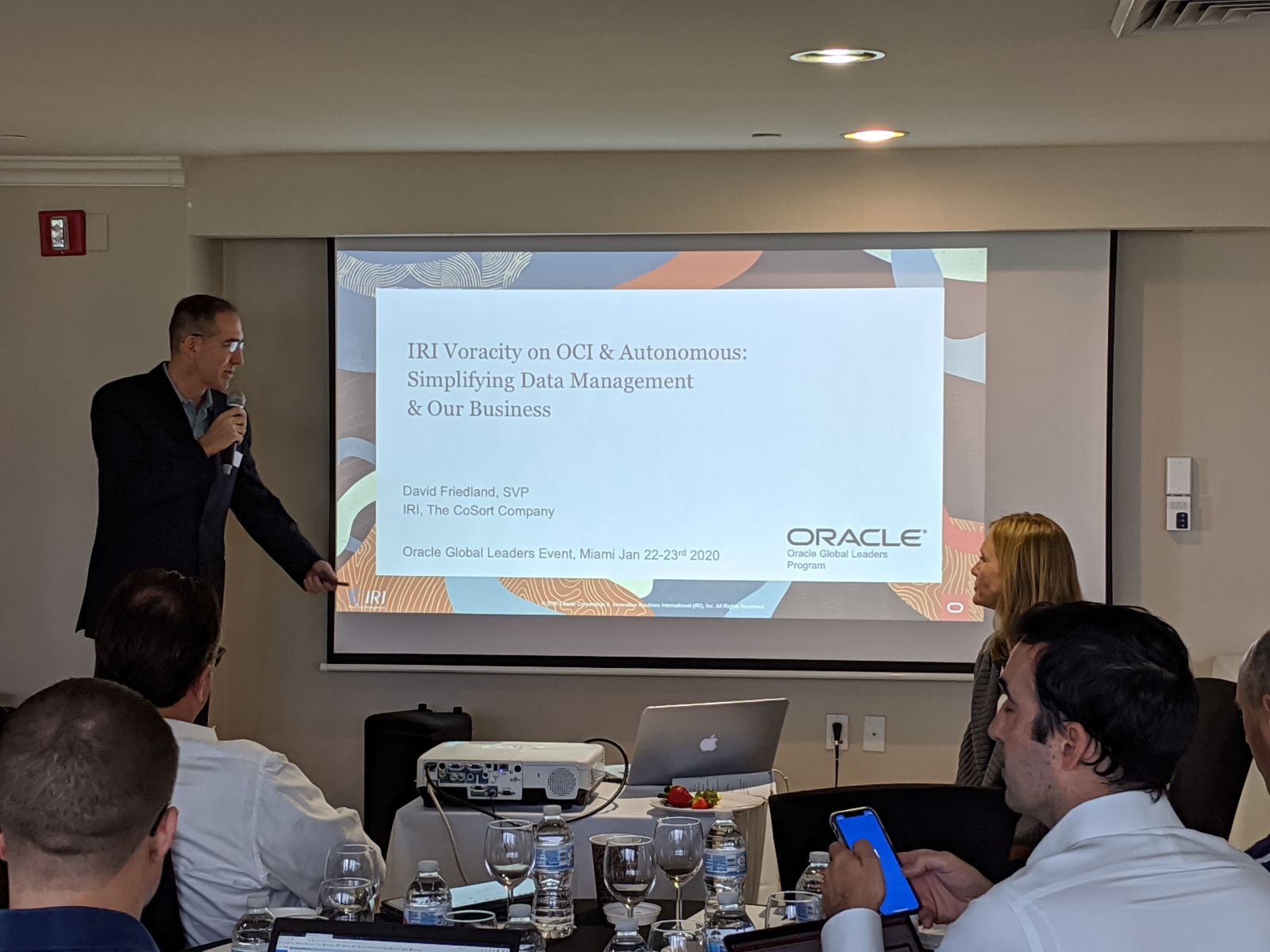Challenges
Oracle users face performance bottlenecks, data movement, and security issues like these:
- unloading large tables
- loading large tables
- routine utility operations (reorgs)
- complex queries or outer joins
- data (warehouse) integration (ETL)
- table migration or replication
- data profiling, classification and E-R diagramming
- data masking or encryption
- SQL transforms or reports
- smart test data creation or subsetting
Typical performance optimization solutions for Oracle involve complex query analyses, histograms, custom tuning, and/or expensive appliances. Oracle column encryption can be cumbersome, and PII masking and test data capabilities are limited or typically available from overpriced megavendors, or specialty software providers who cannot address related governance requirements.
Solutions
Individual IRI software products (or the larger IRI Voracity platform) address these issues in Oracle on-premise and cloud (OCI) databases and applications. IRI services are also available for custom requirements.
Start by connecting to Oracle and performing data classification and discovery in the free IRI Workbench GUI, which can also administer Oracle and many other databases at once. Then, get ready to:
Unload & Load Faster
Query & Reorg Faster
Migrate or Replicate
Mask, Risk Score & Audit PII
Clean, Transform & Report
Synthesize Test Data
VLDB Load and Unload Optimization
Use IRI FACT for Fast Extraction from Oracle. Dump data in parallel from very large Oracle tables to flat files in seconds. Flat files are the fastest, simplest way to stage big data, and the only portable interchange format for large scale data integration, migration, and backup/restore.
Use IRI CoSort to speed Oracle loads:
- sort on the primary index key of the target table
- pipe the output to an SQL*Loader operation with the DIRECT=TRUE parameter
- rebuild the indexes after the load
Pre-sorted, direct path loads are the fastest method for bulk table population.
Use IRI Voracity as a faster, lower cost ETL alternative to the ELT operations of ODI and OWB.
Query & Reorg Acceleration
Value lookups and joins are faster when data are in key order. Reorganize tables often to:
- maintain rows in the order of the most common, long-running queries
- reclaim table space
- create indexes faster
- speed error-checking through views
The Offline Reorg wizard in the IRI Workbench (Eclipse GUI) automates the specification and use of FACT, CoSort, and SQL*Loader to perform en-masse Oracle table reorgs.
Use this wizard or any of its component pieces to optimize table reordering without impacting database users. With the space and time saved by offloading transforms and automating SQL*Loader, you can easily create and maintain multiple query tables.
Data Migration and Replication
Use the data source explorer and IRI NextForm or CoSort SortCL jobs in the IRI Workbench to select and subset the data you need to migrate and replicate. Discover sources and define metadata. Acquire, target, and map data in the GUI. Define new data stores and formats ad hoc or en masse. Account for format masks, keys, and other constraints.
Data Discovery and Masking
Sensitive value discovery and column encryption using Oracle methods can be cumbersome to implement. Ramp-up data security and privacy law compliance faster -- with more options and auditability -- using IRI FieldShield, IRI DarkShield, or Voracity which includes them both). They offer a vast, database-agnostic array of easy-to-implement data discovery, classification, and column-level data masking functions like encryption, redaction, and pseudonymization. Call this technology standalone, via API, with cloning tools, during Voracity sub-setting or ETL operations, or from database applications, to protect table data at rest or in motion!
Transformation and Reporting
SQL transforms and reports perform order by, join, and group by processing inside the database. That is an inherently inefficient place to take those actions when data volumes are large.
Online users can see a degradation in query performance, as the database has to adjust its internal resources to do the heavy lifting of data transformation. The SQL procedure defining those jobs is also lengthy and complex.
The same jobs designed in IRI Voracity ETL workflows or written directly in the explicit 4GL of CoSort's SortCL run much faster outside the database! See this page if you use Oracle Data Integrator (ODI) or Oracle Warehouse Builder (OWB).
The IRI Workbench (Eclipse GUI) environment supports SortCL operations for single-pass transformation and reporting, or fast hand-offs to OBIEE and other BI tools (including direct ODA feeds to BIRT in Eclipse). Use FACT (to extract) and SortCL instead of, or alongside, Oracle for big data integration and reporting
Free up Oracle for the storage and retrieval it was designed for ... free up the money you've been saving for Exadata.
Test Data Generation
To rapidly populate huge Oracle DBs or ETL operations with safe, realistic data, use IRI RowGen (or Voracity which includes RowGen). RowGen uses your data models to automatically generate and populate structurally and referentially-correct test data. There is no need to access or mask production data to achieve data realism. Alternatively, you can build production subsets automatically with the subsetting wizard in IRI Workbench, which will run with a RowGen, FieldShield, or Voracity license.

Working on-premise or in the Oracle Cloud!


